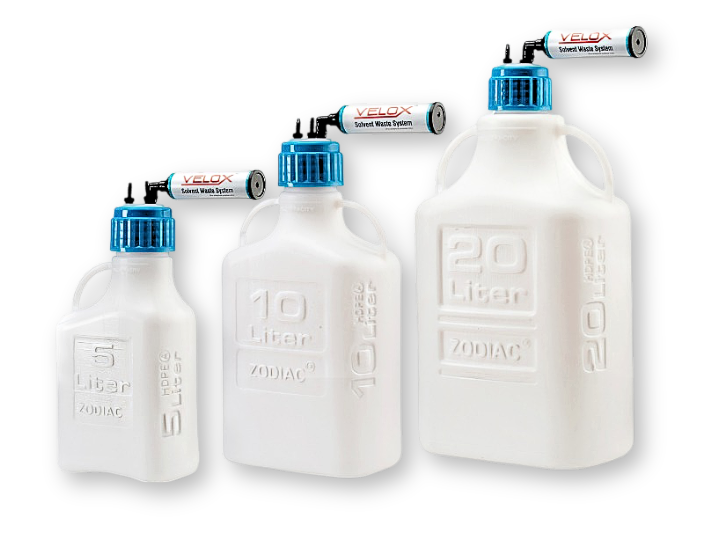
Introduction: Why an HPLC Waste Container is Crucial
In every High-Performance Liquid Chromatography (HPLC) setup, proper waste management plays a critical role in maintaining laboratory safety and ensuring environmental compliance. One often overlooked but essential component is the HPLC waste container. These specialized containers are designed to safely collect and store hazardous solvents, chemical residues, and buffer solutions generated during HPLC processes.
Whether you’re working in a pharmaceutical lab, research institution, or industrial QC department, an HPLC waste container is more than just a bottle—it’s a safety necessity. This article explores everything you need to know about HPLC waste containers, including types, features, usage, regulatory importance, and how to choose the right one.
What is an HPLC Waste Container?
An HPLC waste container is a specialized, chemically resistant container used to collect liquid waste from HPLC systems. These containers are usually made from high-density polyethylene (HDPE) or similar materials and often feature secure caps with fittings for solvent lines and vapor filters.
Key Functions:
- Safely stores solvent waste from HPLC systems
- Prevents chemical exposure and spills
- Minimizes vapor release into the lab
- Ensures regulatory compliance for hazardous waste
Features of a High-Quality HPLC Waste Container
When selecting an HPLC waste container, several features determine its safety and usability:
1. Chemical Resistance
Containers must resist degradation from strong solvents like acetonitrile, methanol, and buffers.
2. Secure, Leak-Proof Cap
Tight-sealing caps prevent spills and allow for multiple tubing connections without leaks.
3. Activated Carbon Filters
Many waste containers are equipped with vapor filters to trap harmful solvent fumes, protecting lab personnel and maintaining air quality.
4. Labeling and Volume Indicators
Pre-labeled containers with clear capacity markings reduce the risk of overfilling and ensure proper disposal practices.
5. Compatibility with HPLC Systems
Many containers are designed to work seamlessly with autosamplers, detectors, and fraction collectors.
Importance of Using Proper HPLC Waste Containers
Using the right HPLC waste container is more than a matter of convenience—it’s critical for:
1. Laboratory Safety
Improper waste handling can result in chemical spills, toxic vapor exposure, and even fire hazards.
2. Environmental Compliance
Proper collection and disposal of solvent waste are mandatory under regulations like OSHA, EPA, and local environmental laws.
3. Operational Efficiency
A well-designed waste collection system reduces downtime, avoids system clogs, and improves overall lab workflow.
How to Choose the Right HPLC Waste Container
1. Assess Solvent Volume
Determine your lab’s typical waste volume. Choose a container that can safely accommodate daily or weekly waste output.
2. Material Compatibility
Ensure the container material is resistant to the solvents used in your specific HPLC applications.
3. Connector Type
Verify compatibility with your HPLC system’s tubing—standard GL45 or GL38 caps with ports are common.
4. Built-in Safety Features
Look for containers with integrated filters, overflow protection, and chemical-resistant labels.
5. Manufacturer Reputation
Choose containers from reliable lab safety and HPLC accessories suppliers for quality assurance.
HPLC Waste Container Maintenance Tips
- Empty regularly: Don’t wait until the container is full. Regular disposal minimizes risk.
- Inspect filters: Replace carbon filters as recommended (usually every 3–6 months).
- Check for leaks: Periodically inspect for cracks, cap looseness, and connector wear.
- Use proper labeling: Always label containers with chemical names and hazard warnings.
Compliance and Disposal Guidelines
To comply with chemical waste disposal regulations, labs must:
- Use labeled, sealed containers
- Document solvent types and quantities
- Store waste separately from incompatible substances
- Follow institutional or municipal disposal protocols
Many labs integrate their HPLC waste containers into chemical waste logs to streamline environmental audits and inspections.
HPLC Waste Containers from Trusted Manufacturers
When sourcing HPLC waste containers, partnering with established suppliers ensures safety and performance. Leading HPLC accessories manufacturers like Zodiac Life Sciences, Fisher Scientific, and VWR offer a wide selection of compliant, lab-grade waste collection solutions.
Zodiac Life Sciences, for instance, provides HPLC waste systems with vapor filters, autoclavable materials, and customizable cap fittings for easy integration with any HPLC system.
Conclusion: Protect Your Lab with the Right HPLC Waste Container
A high-quality HPLC waste container is essential for safe, efficient, and regulation-compliant chromatography operations. By choosing the right container and following best practices for maintenance and disposal, you can protect your team, your equipment, and the environment.
Whether you’re setting up a new lab or upgrading your current system, investing in reliable waste containment is a simple step with big safety returns.
Frequently Asked Questions (FAQs)
Q1: Can I use any container for HPLC waste?
No. Always use chemically resistant containers designed specifically for solvent waste to ensure safety and compliance.
Q2: How often should I change the vapor filter?
Typically every 3–6 months, or sooner if there’s noticeable odor or color change in the filter.
Q3: Are HPLC waste containers autoclavable?
Some models are autoclavable, but always check manufacturer specifications.
Looking for high-quality HPLC waste containers?
Explore Zodiac Life Sciences’ HPLC accessories for reliable, lab-tested waste containment solutions.
